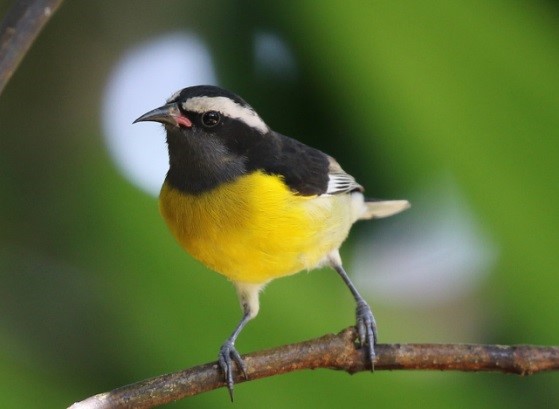Birdfinding.info ⇒ The Jamaican and Hispaniolan form of Bananaquit is common to abundant in woodlands, gardens, and scrub nearly throughout both islands, including most if not all of their many popular coastal resorts.
“Greater Antillean Bananaquit”
Coereba flaveola flaveola
Endemic to Jamaica, Hispaniola, and its satellites, where it occupies most habitats, including forests, open woodlands, scrub, and settled areas.
Identification
Like all Bananaquits, readily recognized by its curved, sharp-tipped bill, broad white eyebrows, blackish mask and upperparts, and yellow breast.
Other distinctive features include a pink gape, yellow rump, yellow shoulders, and a large white spot at the base of the primaries.
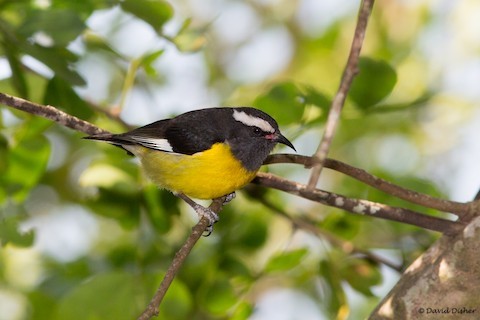
“Greater Antillean Bananaquit”, C. f. flaveola. (Rocklands Bird Sanctuary, Jamaica; March 12, 2016.) © David Disher
The “Greater Antillean Bananaquit” closely resembles the Bananaquit forms that inhabit the Lesser Antilles and Central and South America. These forms all have a well-defined dark-gray throat that contrasts sharply with the vivid yellow underparts at the chest—whereas the “Bahama”, “Cozumel”, “Cayman”, and “Providencia” forms have a larger, whitish throat area that extends down to the upper chest and blends into the yellow of the breast.
The subspecies differ in the darkness of the gray throat patch: it is typically darker, sometimes blackish, on Jamaican flaveola, and paler, ash-gray on Hispaniolan bananivora.

“Greater Antillean Bananaquit”, C. f. bananivora, showing yellow rump. (Bávaro, Dominican Republic; February 27, 2019.) © Emily Tornga
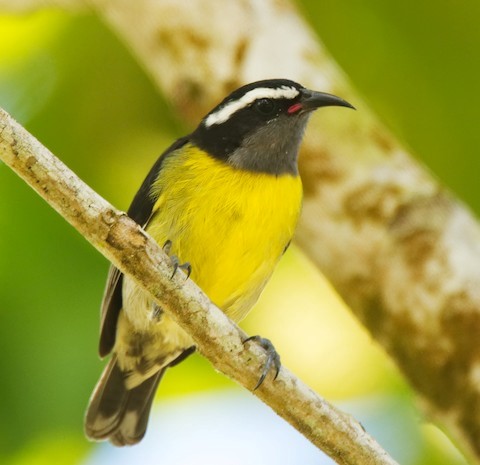
“Greater Antillean Bananaquit”, C. f. bananivora. (Paraíso Caño Hondo, Los Haitises National Park, Dominican Republic; January 4, 2019.) © Forrest Rowland
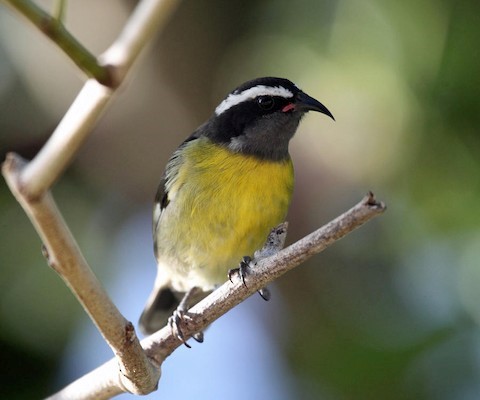
“Greater Antillean Bananaquit”, C. f. bananivora. (Punta Cana, Dominican Republic; November 18, 2011.) © Tom Murray

“Greater Antillean Bananaquit”, C. f. flaveola. (Ecclesdown Road, Jamaica; March 14, 2019.) © Dave Curtis

“Greater Antillean Bananaquit”, C. f. flaveola. (Silver Hill Gap, Jamaica; April 26, 2016.) © Stephen Gast
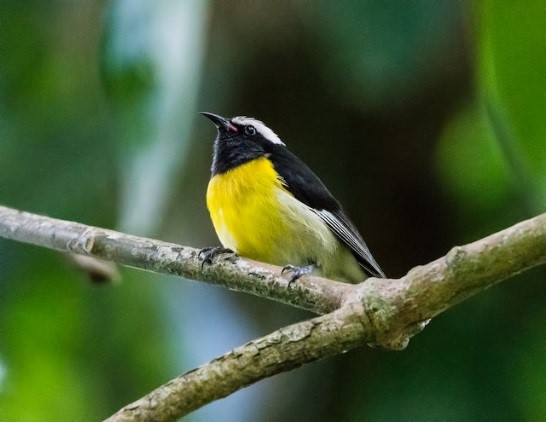
“Greater Antillean Bananaquit”, C. f. flaveola, showing blackish-gray throat typical of the Jamaican subspecies. (Green Castle Estate, Jamaica; March 13, 2016.) © Li Li

“Greater Antillean Bananaquit”, C. f. bananivora, showing bright-yellow shoulders. (Punta Cana, Dominican Republic; January 5, 2005.) © Nick Kontonicolas

“Greater Antillean Bananaquit”, C. f. bananivora. (Bayahibe, Dominican Republic; January 12, 2013.) © Adrián Braidotti
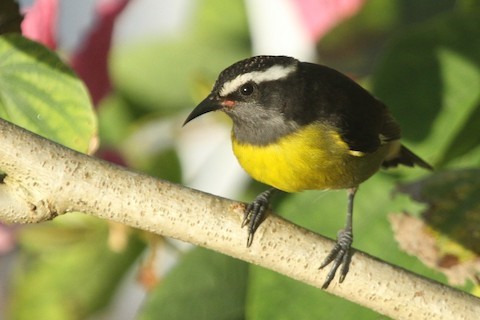
“Greater Antillean Bananaquit”, C. f. bananivora. (Boca Chica, Dominican Republic; December 2, 2018.) © David Robichaud
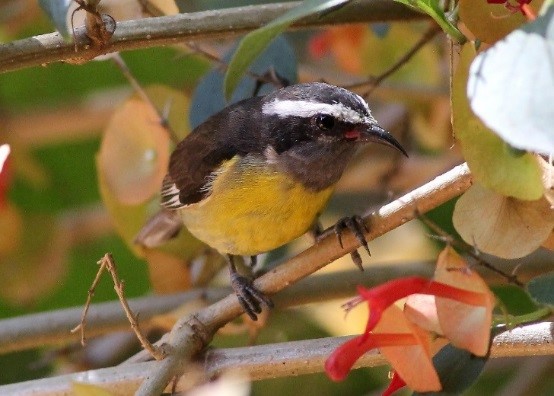
“Greater Antillean Bananaquit”, C. f. bananivora. (Rabo de Gato Trail, Dominican Republic; March 16, 2015.) © Jason Leifester
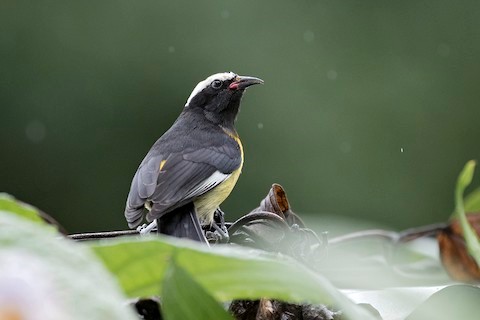
“Greater Antillean Bananaquit”, C. f. flaveola. (Hardwar Gap, Jamaica; January 10, 2018.) © Charley Hesse
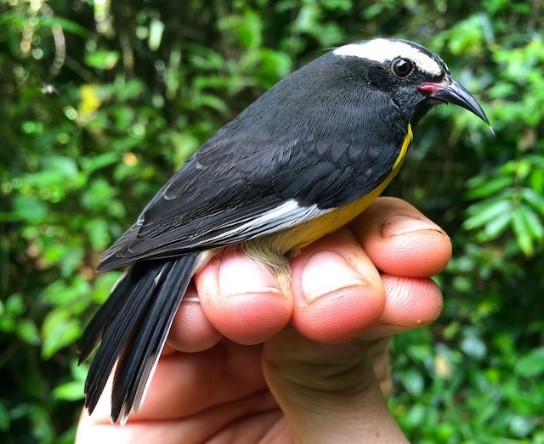
“Greater Antillean Bananaquit”, C. f. flaveola, showing mostly blackish upperparts. (Windsor Research Centre, Jamaica; December 4, 2014.) © Matt Brady
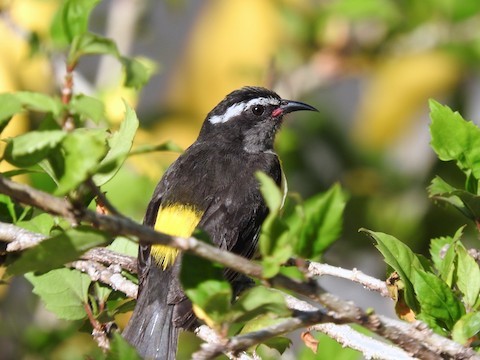
“Greater Antillean Bananaquit”, C. f. bananivora, showing yellow rump. (Bávaro, Dominican Republic; February 9, 2019.) © Gillian Mastromatteo
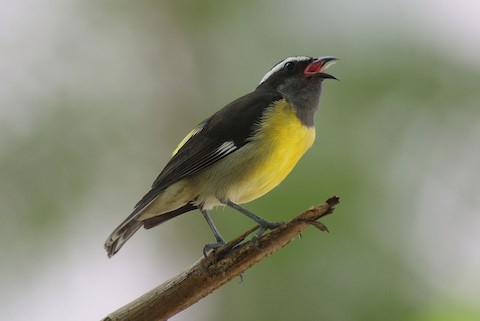
“Greater Antillean Bananaquit”, C. f. bananivora. (Bávaro, Dominican Republic; January 19, 2017.) © Claire et Robert Fortin

“Greater Antillean Bananaquit”, C. f. bananivora, showing full pink gape. (National Botanical Garden, Santo Domingo, Dominican Republic; February 2013.) © Luis Sitges
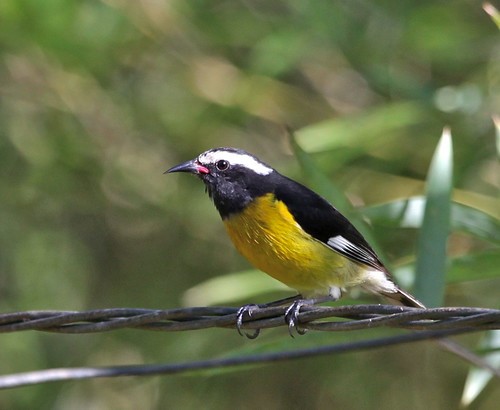
“Greater Antillean Bananaquit”, C. f. flaveola. (Rocklands Bird Sanctuary, Jamaica; April 19, 2014.) © Gil Ewing
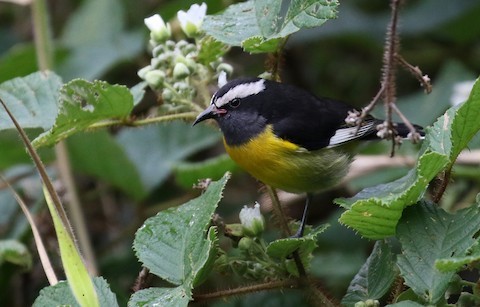
“Greater Antillean Bananaquit”, C. f. flaveola. (Hardwar Gap, Jamaica; January 29, 2019.) © Matthew Grube
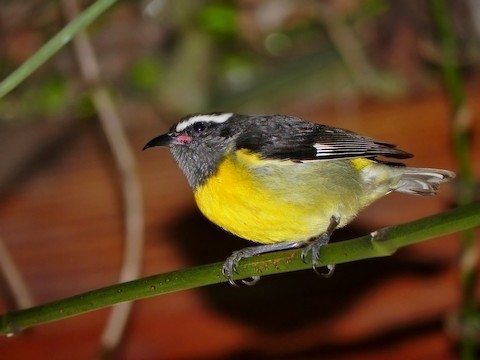
“Greater Antillean Bananaquit”, C. f. bananivora. (Bayahibe, Dominican Republic; January 12, 2013.) © Adrián Braidotti
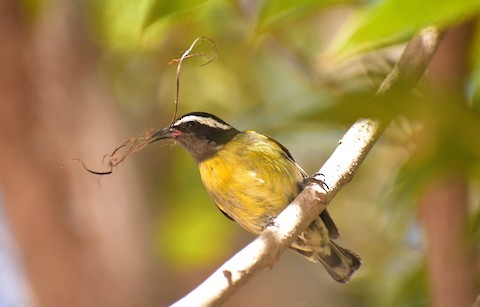
“Greater Antillean Bananaquit”, C. f. bananivora, carrying nest material. (Bávaro, Dominican Republic; March 10, 2020.) © Rebecca Maier
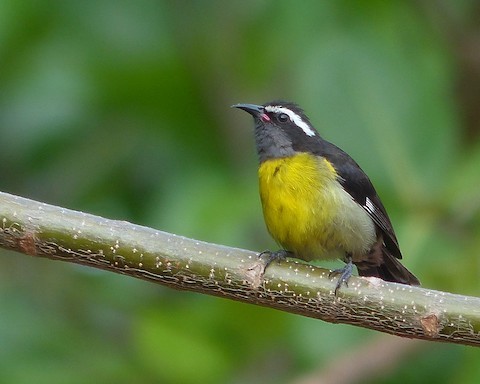
“Greater Antillean Bananaquit”, C. f. bananivora. (Punta Cana, Dominican Republic; April 17, 2017.) © Scott Stafford
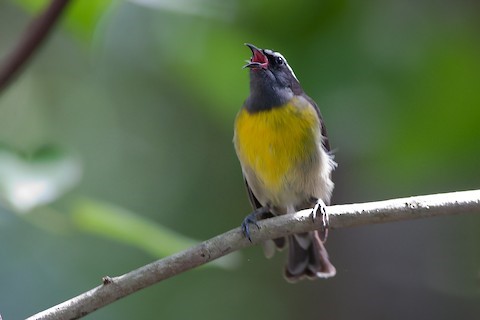
“Greater Antillean Bananaquit”, C. f. bananivora, showing full pink gape. (Bávaro, Dominican Republic; February 6, 2013.) © Zoltan Kovacs
Immatures are similar to adults but duller and lack the contrast between the throat and chest. The upperparts are grayish-brown overall, and the underparts and eyebrows that are predominantly pale-gray or variably washed with yellow.

“Greater Antillean Bananaquit”, C. f. bananivora, immature. (Bávaro, Dominican Republic; January 7, 2017.) © Rick Folkening

“Greater Antillean Bananaquit”, C. f. bananivora, immature. (La Romana, Dominican Republic; November 14, 2020.) © Aitor Gonzalo
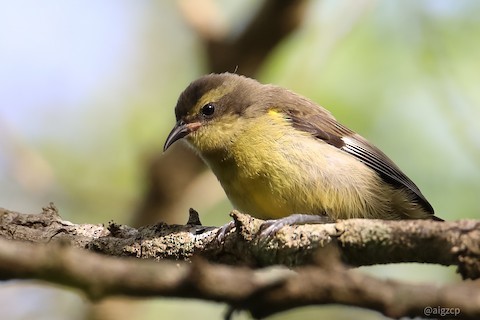
“Greater Antillean Bananaquit”, C. f. bananivora, immature. (La Romana, Dominican Republic; November 14, 2020.) © Aitor Gonzalo
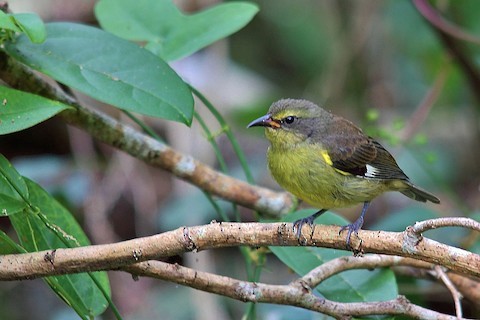
“Greater Antillean Bananaquit”, C. f. bananivora, immature—yellower than most. (Bayahibe, Dominican Republic; January 12, 2013.) © Adrián Braidotti
Cf. “Lesser Antillean Bananaquit”. “Lesser Antillean Bananaquits” of the Puerto Rican and Virgin Islands subspecies, portoricensis and sanctithomae, appear to be visually indistinguishable from the nearest subspecies of “Greater Antillean,” bananivora of Hispaniola. Other “Lesser Antillean” subspecies show a large degree of variation in the color and pattern of the throat patch, but most are at least as dark as the Jamaican subspecies.
The only consistent differences between “Greater Antillean” and “Lesser Antillean” are their voices, especially their songs. “Greater Antillean’s” is usually an evenly-spaced series of fairly clear, high-pitched notes, whereas “Lesser Antillean’s” is usually wheezy and given in short, snappy phrases.
Cf. “Bahama Bananaquit”. “Bahama” and “Greater Antillean Bananaquits” do not normally overlap, but could easily wander into one another’s ranges or to neutral territory in southeastern Cuba. “Greater Antillean” has a sharply defined dark gray throat patch that contrasts sharply with a yellow breast that gradually blends to white on the belly and vent. “Bahama” lacks “Greater Antillean’s” gray throat patch, and instead has mostly whitish underparts with a yellow patch on the lower breast.
Notes
Polytypic form consisting of three to six recognized subspecies, collectively comprising one of approximately five to ten potentially distinct forms of Bananaquit. The “Greater Antillean Bananaquit” includes the endemic subspecies of Jamaica (flaveola), Hispaniola (bananivora), and Tortue (nectarea). Some references additionally include the “Cayman” form (sharpei)—which would in turn seem to suggest that the apparently closely related “Providencia” form (tricolor of Providencia and oblita of San Andrés) should also be included.
Frontiers of Taxonomy: Bunches of Bananaquits. The 43 or so subspecies of Bananaquit vary significantly in plumage and voice, and it seems clear that what has traditionally been recognized as a single species consists of several distinguishable forms, and likely two or more species, but it is a complex puzzle.
Mitochondrial DNA analysis (Bellemain et al. 2008) indicates that the oldest splits are among three lineages: “Bahama” (bahamensis, plus the “Cozumel” subspecies, caboti); “Greater Antillean” (Jamaican flaveola, Hispaniolan bananivora, “Cayman” sharpei, and possibly also the similar “Providencia” form, which includes tricolor and oblita); and the rest (which can be subdivided into “Lesser Antillean” and “Continental” groups).
References
Bellemain, E., E. Bermingham, and R.E. Ricklefs. 2008. The dynamic evolutionary history of the bananaquit (Coereba flaveola) in the Caribbean revealed by a multigene analysis. Evolutionary Biology 8:240.
Bellemain, E., O.E. Gaggiotti, A. Fahey, E. Bermingham, and R.E. Ricklefs. 2012. Demographic history and genetic diversity in West Indian Coereba flaveola populations. Genetica 140:137-148.
BirdLife International. 2016. Coereba flaveola. The IUCN Red List of Threatened Species 2016: e.T22722080A94747415. https://dx.doi.org/10.2305/IUCN.UK.2016-3.RLTS.T22722080A94747415.en. (Accessed May 4, 2021.)
eBird. 2021. eBird: An online database of bird distribution and abundance. Cornell Lab of Ornithology, Ithaca, N.Y. http://www.ebird.org. (Accessed May 4, 2021.)
Howell, S.N.G., and S. Webb. 1995. A Guide to the Birds of Mexico and Northern Central America. Oxford University Press, Oxford.
Kirwan, G.M., A. Levesque, M. Oberle, and C.J. Sharpe. 2019. Birds of the West Indies. Lynx Edicions, Barcelona.
Seutin, G., N.K. Klein, R.E. Ricklefs, and E. Bermingham. 1994. Historical Biogeography of the Bananaquit (Coereba flaveola) in the Caribbean Region: A Mitochondrial DNA Assessment. Evolution 48:1041-1061.
Xeno-Canto. 2021. Bananaquit – Coereba flaveola. https://www.xeno-canto.org/species/Coereba-flaveola. (Accessed May 4, 2021.)
